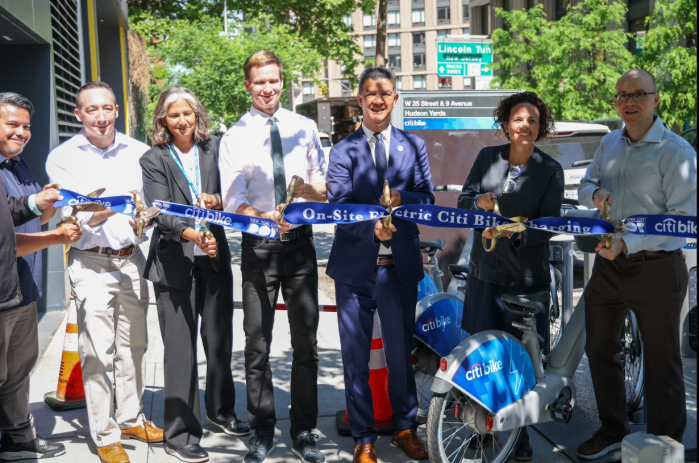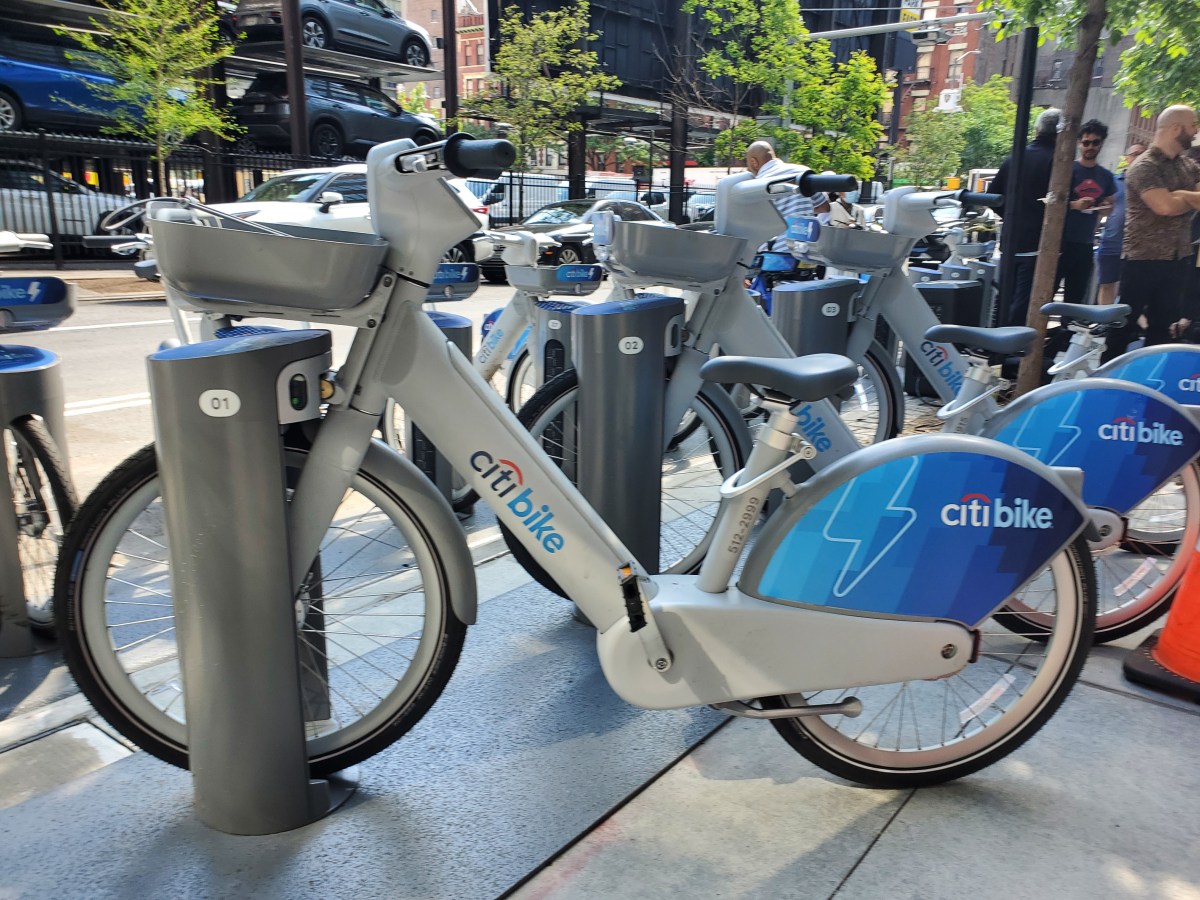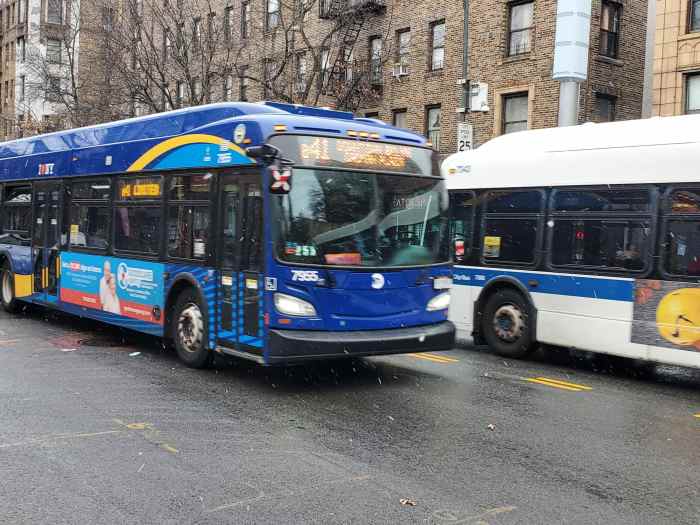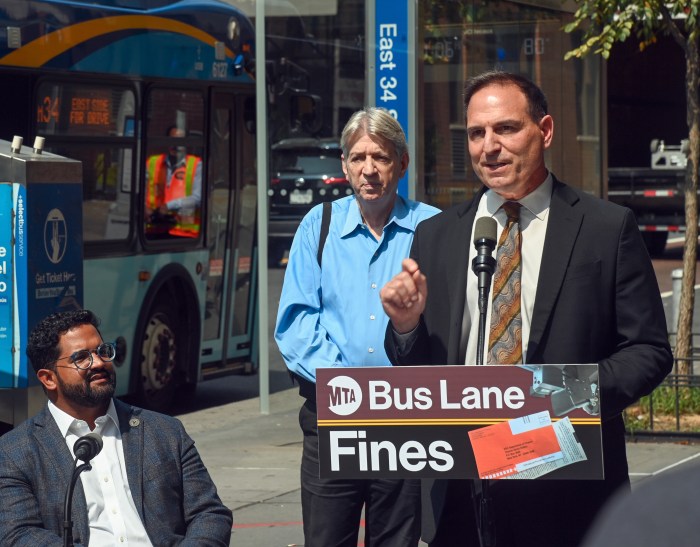Citi Bike rolled out on Monday the first electric charging docks for its popular e-bike fleet in Brooklyn and Manhattan.
The bike share system rolled out the new charging docks connected to the grid at 35th Street and 9th Avenue in Hell’s Kitchen, and at Meserole and Manhattan Avenues in Greenpoint, Brooklyn. All docks at the Greenpoint station can charge e-bikes, while in Hell’s Kitchen, only the three docks on the sidewalk are equipped for now.
Since first rolling out pedal-assist bikes in 2018, the electric cycles have proven more popular than their manual counterparts. Today, about two-thirds of all Citi Bike rides are completed on e-bikes, even though only about a third of the fleet is electric.
Unfortunately, that means the fleet’s 15,000 e-bikes are frequently running out of charge, necessitating a complex maneuver of Citi Bike technicians heading to stations to swap out batteries manually. Rows of bulky grey bikes at docks with flashing red lights have become a frequent image for the system’s tens of thousands of daily riders.
Officials with the city’s Department of Transportation (DOT) and at Lyft, which operates the system, believe the chargers will improve the availability of e-bikes, which were ridden over 100,000 times on May 7.
“E-bikes make it easier for people of all ages and ability levels to choose cycling,” said DOT Commissioner Ydanis Rodriguez at the May 20 unveiling of the Hell’s Kitchen dock. “Station electrification will allow us to test charging bikes on-site instead of manual battery swaps. On-site bike charging has the potential to improve electric Citi Bike availability citywide.”

Lyft says it aims to ultimately have 20% of all docks equipped with charging tech, which it says will meet most of the fleet’s charging needs without necessitating in-person battery swaps.
“With only 20% of the charging station network built out, we think we can make it more likely by 25% riders can find an e-bike,” said Caroline Samponaro, vice president of transit, bike, and scooter policy at Lyft. “Earlier this month we delivered 100,000 e-bikes in a single day in the Citi Bike program, which is incredible in and of itself. With 20% of the station network charging, we can do at least 25,000 more trips in a single day, and that’s on current demand which we know is growing for the program day-to-day.”
Funding for the charging infrastructure, as with the rest of the system, came not from the city but from Lyft, which finances the system.
If a fifth of stations are equipped with charging, Samponaro said, the company expects it can reduce its in-person battery swaps by 90%, significantly reducing emissions and congestion from vans carrying bike techs and batteries to stations.
Presently, more than 35% of bikes in the Citi Bike fleet are e-bikes. To address surging demand, in November, Lyft announced it would double the size of the e-bike fleet from 10,000 to 20,000; the number presently sits at about 15,000.
Citi Bike launched in 2013 with 6,000 bikes only in the toniest parts of Manhattan and Brooklyn. It has since grown well beyond those borders, stretching into every borough except Staten Island. The system still does not cover the majority of the city’s landmass but has expanded into the city’s most densely populated neighborhoods. Lyft ultimately plans to have a total of 40,000 bikes in the system.
Rodriguez said that annual cycling trips in the city have doubled from 98 million in 2009 to 200 million last year. “Citi Bike is a key part of this growth,” he noted.





































